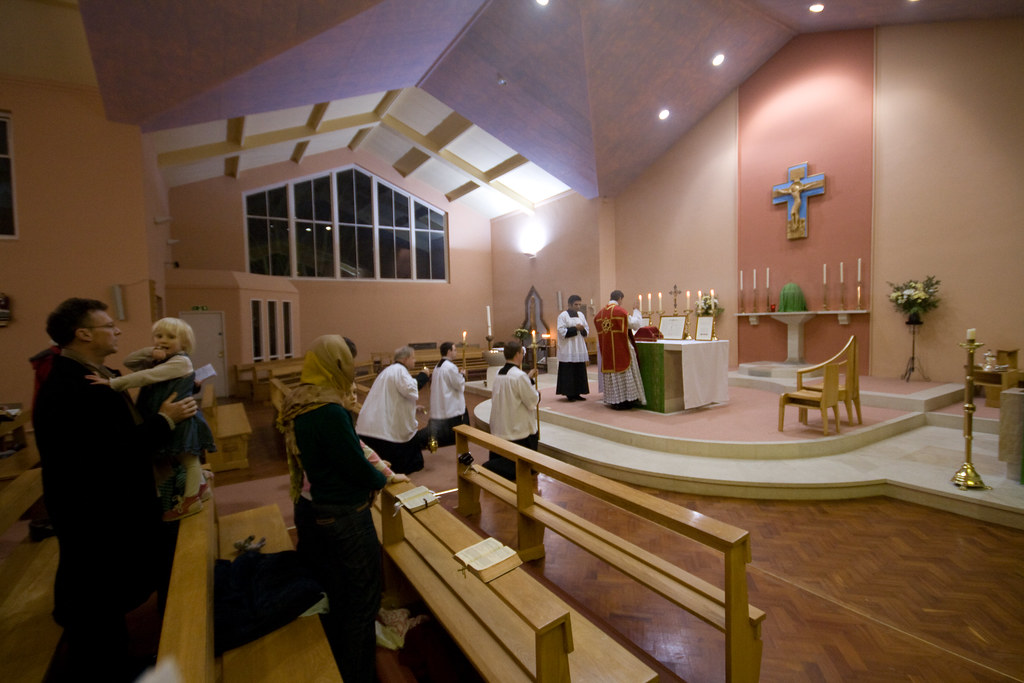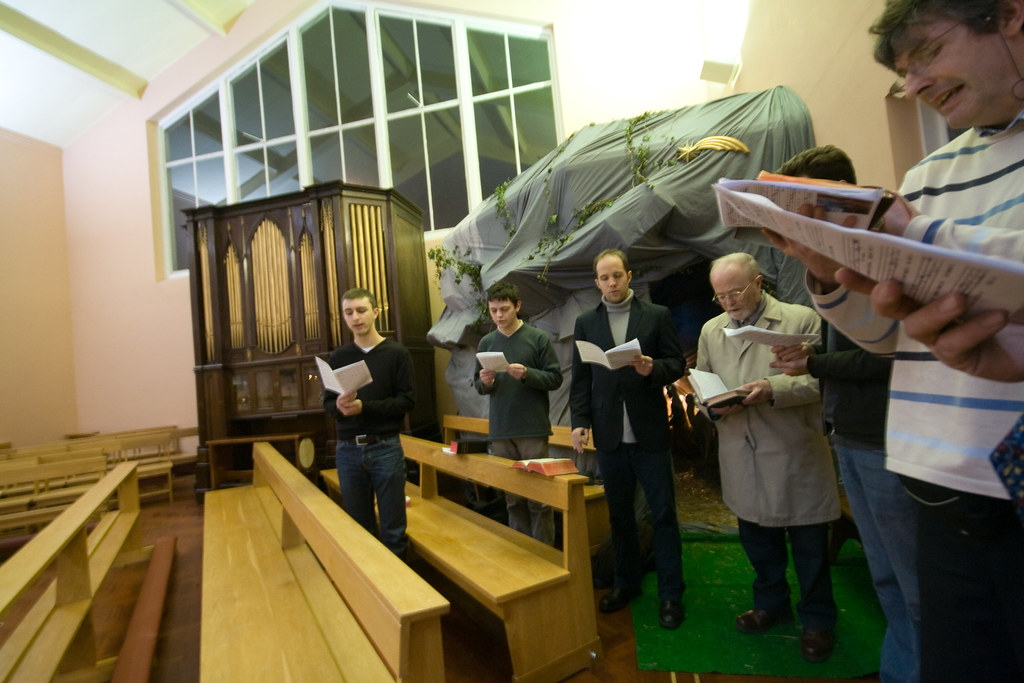This interesting quotation has been found by someone on the NLM and is reproduced by Fr Z. It is interesting because it emphasises how many of the reformers of the Missal after the Second Vatican Council saw themselves as implementing the principles of the Liturgical Movement, and were presumably horrified to see what actually happened - in this case the 'four-hymn sandwich', which from being a tolerated abuse in 1962 became an almost universal rule after 1970.
Bugnini’s own Consilium in 1969 offered the following instruction, consistent with the Vatican II emphasis on chant over vernacular hymnody. As printed in 1 Notitiae, 5 (1969), p. 406
That rule [permitting vernacular hymns] has been superseded. What must be sung is the Mass, its ordinary and proper, not “something,” no matter how consistent, that is imposed on the Mass. Because the liturgical service is one, it has only one countenance, one motif, one voice, the voice of the church. To continue to replace the texts of the Mass being celebrated with motets that are reverent and devout, yet out of keeping with the Mass of the day amounts to continuing an unacceptable ambiguity: it is to cheat the people. Liturgical song involves not mere melody, but words, text, thought, and the sentiments that the poetry and music contain. Thus texts must be those of the Mass, not others, and singing means singing the Mass not just singing during Mass.
The singing of 'any old motet', let alone one of an endlessly recylced set of vernacular hymns, at Mass, is rejected in favour of the Mass texts: these, indeed, are the voice of the Church, and we seek to gild the lily at our peril. When people talk about the things which 'always happened in the old days' they should remember that 'the old days' was a theatre of conflict between the Liturgical Movement and people who did not take the liturgy so seriously. We may not want to be quite as rigid as this quotation suggests - isn't the Vespers hymn of the day sufficiently intwined with the theme of the Mass, or the Ave Maris Stella on a Feast of Our Lady? - but it is worth keeping the ideal in mind. The texts of the Mass are the Church's commentary on the liturgical occasion, and we must let the Church have the final say.
The reform of 1970 bears little resemblance to anything the Liturgical Movement in its prime might have anticipated or desired, because the reformers themselves seem to have forgotten the respect which is due to the immemorial texts and customs of the Church. Instead of saying. 'The Church teaches us through the liturgy, and therefore we must exercise extreme caution in changing the liturgy', they seemed to be saying 'The Church teaches us through the liturgy, so however different the reformed liturgy turns out to be it will by definition be ok'.
Sunday 31 January 2010
Saturday 23 January 2010
Feast of St Agnes

On Thursday evening we accompanied a Mass at the church of St Anthony of Padua in Headington, for the feast of St Agnes, thanks to the hospitality of the Parish Priest, Fr Aldo Tapparo. This was a feast of considerable importance in former centuries, and had many chants composed for it, which are now also used for other feasts as well. There is a remarkable ceremony in Rome on this day of the blessing of the lambs, whose wool is then used to make pallia for archbishops; this year it was performed by Pope Benedict XVI.
Gradual 'Diffusa est' and Alleluia 'Quinque prudentes virgines'

Offertory 'Afferentur regi virgines' followed by the Vespers hymn Jesu corona Virginum, from the Common of Virgins.
Communion Quinque Virgines
At the end of Mass we sang the Alma Redemptoris Mater, to the Solemn Tone (the Roman version printed in the Liber: there are very similar Dominican and Sarum versions as well). All the camcorder showed was the back of the servers so I put in some still pictures.
For more on this Mass, and more photos, see the Chairman's Blog.
Subscribe to:
Posts (Atom)

